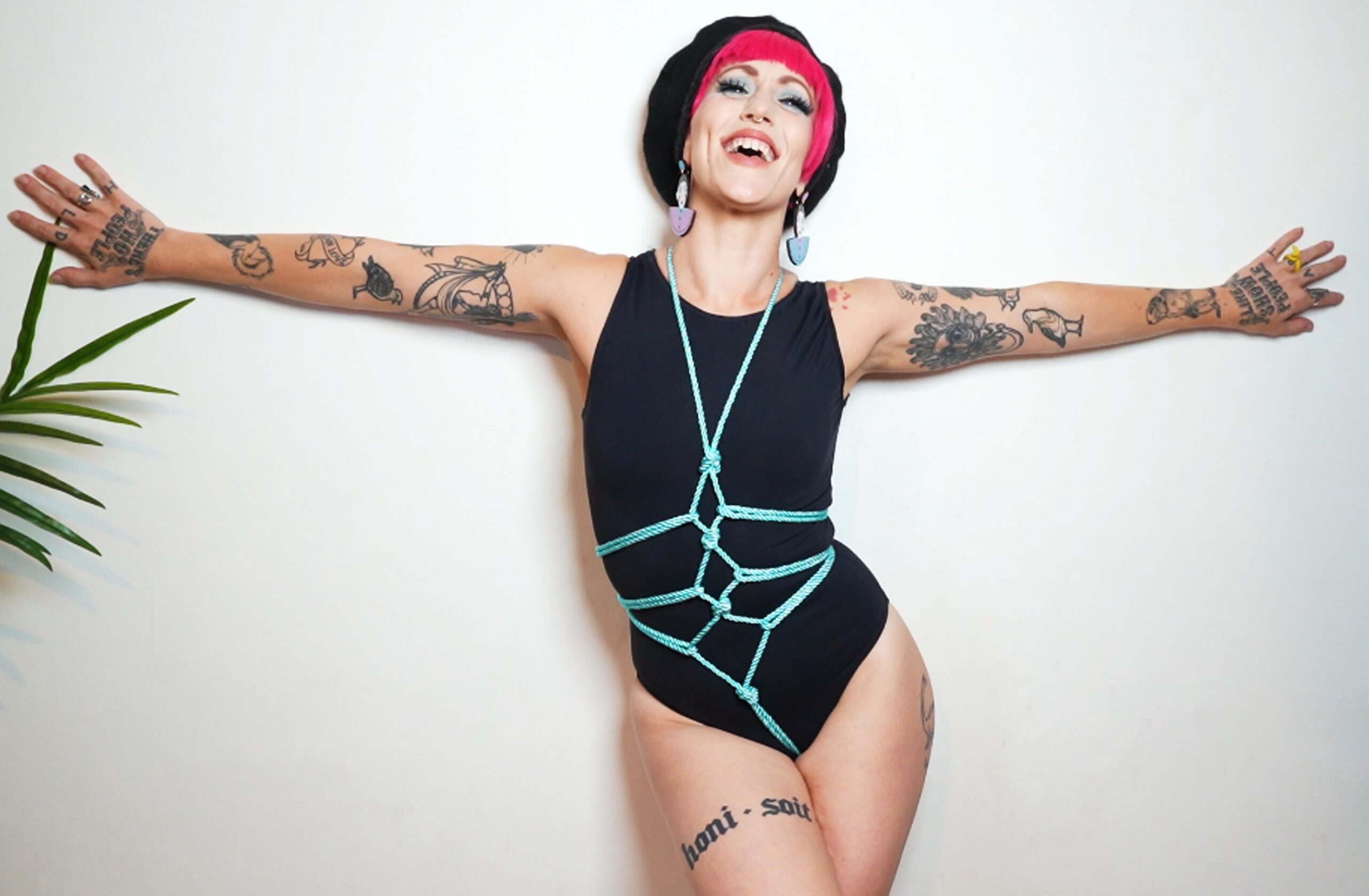Navigating the Binary Maze
Navigating the complexities of dating as a non-binary individual within a society deeply entrenched in binary gender norms can be a labyrinthine experience, rife with challenges and misunderstandings.
One of the most prominent hurdles is the pervasive use of gendered language and social expectations that often fail to accommodate non-binary identities.
Dating apps, for instance, frequently default to male and female binary categories, forcing non-binary individuals into an uncomfortable choice or leaving them entirely excluded.
Even seemingly innocuous phrases like “boyfriend” or “girlfriend” can create awkwardness or misinterpretation, as they assume a gendered relationship dynamic that may not align with the non-binary person’s experience.
Furthermore, societal stereotypes and biases often color how people perceive and interact with non-binary individuals.
Assumptions about sexual orientation, gender presentation, and even personal interests can lead to misjudgments and prejudice, making it difficult to find genuine connection.
Miscommunication and lack of understanding can also arise from the varying ways individuals express their non-binary identities.
Some may prefer to use they/them pronouns, while others may identify with she/her or he/him pronouns, depending on the individual’s comfort and preference.
Respecting these nuances is crucial for fostering open and honest communication in dating.
Beyond the linguistic and societal challenges, non-binary individuals often face internalized feelings of inadequacy or fear of rejection due to societal pressure to conform to binary norms.
Overcoming these internal barriers and embracing authenticity can be a journey of self-discovery and empowerment.
Ultimately, navigating the dating landscape as a non-binary person requires patience, resilience, and a willingness to challenge societal norms.
Open communication, clear expectations, and a commitment to understanding and respecting individual identities are essential for building meaningful connections in a world that is slowly but surely evolving to embrace gender diversity.
Navigating the world of dating as a non-binary individual can feel like traversing a maze built for two distinct paths, with little room for those who don’t fit neatly into either. This “binary maze” is a reflection of societal norms deeply entrenched in the binary understanding of gender, where male and female are seen as the only valid options.
One of the primary challenges is encountering assumptions and expectations rooted in this binary framework. Dating apps, often designed with male/female filters, can feel exclusionary, forcing non-binary individuals into boxes that don’t accurately represent them.
Conversations about pronouns and gender identity can also be fraught with discomfort or misunderstanding. Even well-intentioned inquiries can lead to awkward exchanges, highlighting the lack of widespread knowledge and acceptance of non-binary identities.
The pressure to conform to traditional dating norms adds another layer of complexity. Societal expectations around romance often revolve around heterosexual relationships, making it harder for non-binary individuals to find partners who understand and validate their experiences.
Despite these hurdles, finding a community and forging connections within the non-binary dating landscape is possible.
Online platforms specifically designed for non-binary individuals offer a safe space to connect with like-minded people who understand the unique challenges they face.
Networking through LGBTQ+ organizations and attending events can also provide opportunities for meaningful encounters.
Openly sharing experiences and educating others about non-binary identities is crucial in breaking down stereotypes and fostering understanding. The more visible and vocal the non-binary community becomes, the easier it will be to navigate the binary maze and build a fulfilling dating life.
Dating Apps: A Minefield of Mayhem
Dating apps have revolutionized the way people connect, offering unprecedented access to potential partners. However, for non-binary individuals navigating the complex landscape of romantic relationships, these platforms can often feel like minefields of mayhem.
The rigid binary categorization inherent in many dating apps presents a fundamental challenge. Forced to choose between “male” and “female,” non-binary users are confronted with an impossible dichotomy that fails to acknowledge their fluid identities.
Selecting a gender that doesn’t accurately reflect their experience can lead to mismatched expectations and encounters, while opting out of the binary altogether risks being overlooked or dismissed by potential partners who may be searching for someone within those predefined categories.
This “He/She” predicament highlights a broader societal issue: the pervasive assumption that gender is binary. It reinforces the notion that there are only two acceptable ways to exist, leaving non-binary individuals feeling marginalized and misunderstood.
Beyond the initial hurdle of categorization, dating apps often perpetuate harmful stereotypes and biases.
Non-binary users may encounter messages laced with confusion, curiosity bordering on objectification, or outright hostility from those who struggle to comprehend their gender identity.
The lack of visibility and representation for non-binary individuals within dating app cultures contributes to these challenges.
Limited options for expressing one’s gender beyond the male/female binary, coupled with a scarcity of role models and relatable experiences, can make navigating these platforms feel isolating and discouraging.
The path forward requires a multifaceted approach.
Dating app developers have a responsibility to implement inclusive features that allow for more nuanced gender expressions beyond the traditional binary. This could include expanded gender options, pronoun selection, and educational resources to foster understanding and acceptance.
Simultaneously, societal attitudes towards gender identity need to evolve. Open dialogue, education, and representation are crucial to dismantling harmful stereotypes and creating a more inclusive environment for all individuals, regardless of their gender expression.
Dating apps, marketed as modern love’s greatest invention, often feel more like algorithmic labyrinths designed to frustrate than facilitate connections. For individuals who don’t subscribe to the rigid categories of male or female, these platforms can feel particularly alienating.
The very structure of many dating apps inherently reinforces a binary understanding of gender and sexuality. The “male” and “female” boxes serve as gatekeepers, forcing non-binary individuals into uncomfortable choices: misrepresent their identity to access potential matches or remain invisible altogether. This can lead to feelings of exclusion and invisibility, further perpetuating the societal marginalization they already face.
Beyond the basic categorization dilemma, non-binary users often encounter a minefield of assumptions and misinterpretations. Preconceived notions about gender roles and expressions can lead to unwelcome advances, awkward conversations, or outright dismissal. Even seemingly innocuous questions like “what are you looking for” can become loaded with expectations that don’t align with their lived experience.
The language used on these platforms often fails to acknowledge the nuances of gender identity. Terms like “boyfriend” and “girlfriend” carry connotations that may not resonate with everyone. This lack of inclusive language can make it difficult for non-binary individuals to express their desires and needs authentically, leading male masturbators to frustration and disconnection.
Creating truly inclusive dating spaces requires a fundamental shift in perspective. App developers must prioritize user-centric design that recognizes the diversity of gender identities beyond the binary. This includes offering more inclusive options beyond “male” and “female,” allowing users to self-identify with pronouns and gender expressions, and providing resources for education and understanding.
Furthermore, fostering a culture of respect and acceptance is paramount. Encouraging respectful communication, promoting empathy and understanding, and actively addressing instances of bias are essential steps towards building inclusive communities within dating apps.
Ultimately, the goal should be to create platforms where everyone feels seen, valued, and empowered to connect with others authentically. By moving beyond the limitations of binary boxes and embracing inclusivity, dating apps can truly become spaces where love knows no bounds.
Embracing Authenticity
Embracing authenticity is paramount, especially in the realm of dating where societal norms often feel rigid and confining. For non-binary individuals navigating a world steeped in binary expectations, self-love becomes an anchor in the storm.
The pressure to conform to traditional gender roles can be immense. Dating apps, designed with binary options, force a choice that doesn’t reflect the fluid reality of many non-binary experiences. This can lead to feelings of frustration, inadequacy, and even self-doubt.
It’s crucial to remember that authenticity is not about seeking external validation but rather about aligning your actions and expressions with your true self. It means letting go of the need to fit into pre-defined boxes and celebrating the unique tapestry of your identity.
Self-love forms the foundation upon which authenticity can flourish. It’s a conscious choice to accept and appreciate all facets of yourself, including your gender identity. Cultivating self-love involves recognizing your inherent worthiness, regardless of societal expectations or others’ perceptions.
When you radiate self-love, you emanate confidence and vulnerability, qualities that attract genuine connections. People are drawn to authenticity; they sense when someone is true to themselves.
Dating as a non-binary person may present unique challenges, but it’s also an opportunity for growth and empowerment. By embracing your authentic self and cultivating self-love, you create space for meaningful relationships that celebrate your individuality.
Navigating the world of dating as a non-binary individual can feel like traversing a minefield of societal expectations and ingrained binary norms. A core challenge lies in reconciling the pressure to conform to traditional gender roles with the desire for authentic self-expression.
Often, dating apps and social circles are structured around the binary categories of “male” and “female,” leaving non-binary individuals feeling excluded or forced to choose a label that doesn’t fully represent their identity. This can lead to feelings of invalidation, frustration, and a sense of having to “perform” a gender that isn’t true to themselves.
Breaking down these stereotypes starts with embracing authenticity. Non-binary individuals deserve to express themselves freely, without fear of judgment or rejection based on societal norms. This means being open about one’s identity and refusing to be boxed in by labels that don’t feel right.
Communication is key in overcoming these challenges. Openly discussing gender identity and expectations with potential partners can create a space of understanding and respect. It allows for setting clear boundaries and ensures that both parties are on the same page regarding what constitutes a fulfilling and respectful relationship.

Education plays a crucial role in dismantling harmful stereotypes. Encouraging open conversations about gender identity and promoting awareness of non-binary experiences can help shift societal perceptions and create a more inclusive dating landscape.

The journey toward authentic expression and acceptance can be challenging, but it is ultimately rewarding. By embracing vulnerability, advocating for oneself, and fostering open communication, non-binary individuals can pave the way for a future where dating reflects the beautiful diversity of human experiences.
Get all the content here
Explore the full online post
